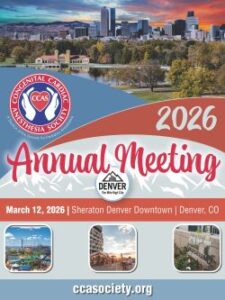{“questions”:{“kd7st”:{“id”:”kd7st”,”mediaType”:”image”,”answerType”:”text”,”imageCredit”:””,”image”:”https:\/\/ccasociety.org\/wp-content\/uploads\/2021\/09\/QOW-9-30-2021.jpg”,”imageId”:”4948″,”video”:””,”imagePlaceholder”:””,”imagePlaceholderId”:””,”title”:”Authors: David J. Krodel, MD, MS, FASA<\/strong> \u2013 Ann & Robert H. Lurie Children\u2019s Hospital of Chicago, Northwestern Feinberg School of Medicine \r\nMichael A. Evans, MD<\/strong> \u2013 Ann & Robert H. Lurie Children\u2019s Hospital of Chicago, Northwestern Feinberg School of Medicine
Question of the Week 336
{“questions”:{“s8uup”:{“id”:”s8uup”,”mediaType”:”image”,”answerType”:”text”,”imageCredit”:””,”image”:””,”imageId”:””,”video”:””,”imagePlaceholder”:””,”imagePlaceholderId”:””,”title”:”Author: Michael A. Evans, MD \u2013 Ann & Robert H. Lurie Children\u2019s Hospital of Chicago, Northwestern Feinberg School of Medicine
Question of the Week 335
{“questions”:{“2jfs5”:{“id”:”2jfs5″,”mediaType”:”image”,”answerType”:”text”,”imageCredit”:””,”image”:””,”imageId”:””,”video”:””,”imagePlaceholder”:””,”imagePlaceholderId”:””,”title”:”Author: Michael A. Evans, MD \u2013 Ann & Robert H. Lurie Children\u2019s Hospital of Chicago, Northwestern Feinberg School of Medicine
Question of the Week 334
{“questions”:{“n0cy0”:{“id”:”n0cy0″,”mediaType”:”image”,”answerType”:”text”,”imageCredit”:””,”image”:””,”imageId”:””,”video”:””,”imagePlaceholder”:””,”imagePlaceholderId”:””,”title”:”Author: Michael A. Evans, MD \u2013 Ann & Robert H. Lurie Children\u2019s Hospital of Chicago, Northwestern Feinberg School of Medicine
Question of the Week 332
{“questions”:{“55tk6”:{“id”:”55tk6″,”mediaType”:”image”,”answerType”:”text”,”imageCredit”:””,”image”:””,”imageId”:””,”video”:””,”imagePlaceholder”:””,”imagePlaceholderId”:””,”title”:”Authors: Jed Kinnick, MD and Destiny F. Chau MD \u2013 Arkansas Children\u2019s Hospital\/ University of Arkansas for Medical Sciences, Little Rock, AR.
- « Previous Page
- 1
- …
- 41
- 42
- 43
- 44
- 45
- …
- 47
- Next Page »
